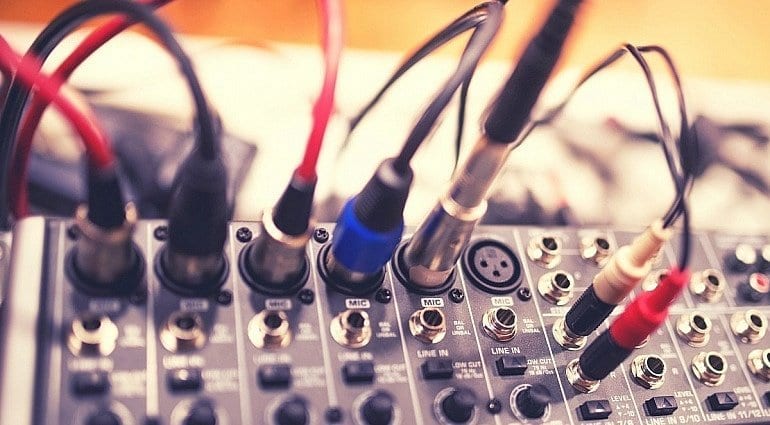
There are two ways to send audio signals from point A to point B via copper cables: symmetrically and asymmetrically also referred to “balanced” and “unbalanced”. There are many beliefs surrounding audio signals, some claiming differences can even be heard using in-ear headphones! To shed light on these myths, we addressed this issue in a much simpler way.
Understanding Balanced Cables
The symmetrical (or balanced) cable was invented to solve a fundamental problem in sound transmission: noise/ interference from outside the cable. Eliminating external interference at the root cause would be physically impossible, so therefore the solution lay in the exclusion of it: by duplicating the signal on a separate wire before it is transmitted through the cable. More importantly, one of the two signals is inverted. This is a process called balancing and is illustrated in the following diagram:
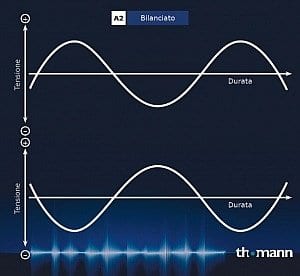
How Balanced Cables Work: Technical Insights
Because of the inverted phase signal, these two signals cannot be mixed at the other end of the cable, as they would simply cancel each other out. At this point, the phase of one of the two is recovered and mixed with the original. But then where does the magic happen? The background noise/interference is captured by both signals and the phase-inverted signal will cancel the one on the regular phase, and voila … The noise is canceled! In mathematics, it would be displayed as so: x + (-x) = 0
As you can see, balanced connections are the perfect option in minimizing noise/interference, especially in longer distances accompanied by the presence of electronic devices along the way. Unfortunately, the classic “hum” of 50Hz cannot be removed, as this has something to do with the ground connection. But that’s a whole nother story …
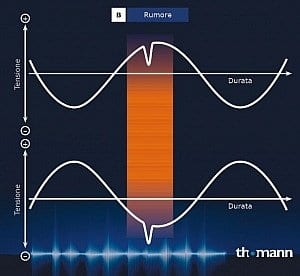
The Importance of Compatible Equipment
In order for the balanced signal to be transmitted correctly, both the source and the target device must be equipped with this option. Signals produced by microphones, for example are almost always balanced, as they have a moderately low output level and are thus vulnerable to external noises before entering the preamp. Instrument signals, however, are almost always unbalanced. Fortunately, modern audio interfaces can process signals depending on the type of Line / Instrument controls. Line inputs are often designed as XLR while accepting balanced connections, but also allow you to connect TRS / Jack cables and therefore unbalanced signals. It’s not possible to have a balanced signal in the presence of simple “TS” links which is missing the extra contact that transmits the inverted signal mentioned earlier. Situations like this are rare and are usually found using low-cost audio interfaces, when manufacturers save on the cost of the components needed for the circuitry.
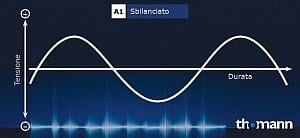 Don’t worry if you accidentally happen to “mix” balanced cables and instruments to equipment that only work with unbalanced connections, there is no risk of damaging anything. The worst thing that can happen is that you won’t be able to hear anything.
Don’t worry if you accidentally happen to “mix” balanced cables and instruments to equipment that only work with unbalanced connections, there is no risk of damaging anything. The worst thing that can happen is that you won’t be able to hear anything.
Incidentally, there is balanced and also unbalanced signals for the digital world, where noise/interference can be even more invasive as it does not allow the interface used to properly “read” the signal. The coaxial formats S / PDIF and AES / EBU formats do not differ much in size as in the physical differences of transmission: the first uses unbalanced connectors ( “RCA”), while the AES / EBU comes with the classic 3-pin balanced XLR cables.
Conclusion: Why Choose Balanced Connections?
The balanced transmission is the preferred choice for obtaining the signal routing as free from problems as possible. In the world of microphones it’s the only possible transmission, whereas in other areas it is increasingly preferred as long as it is possible to have compatible equipment (XLR or TRS). With very long cables (we’re talking tens of meters, for example), using balanced cables is practically a must. In addition, balanced cables are able to supply the power required by microphones or active DI Boxes (phantom power). Basically, everything that revolves around the world of miking requires balanced cables.
Guitar and bass players would normally rarely use balanced cables. A guitar, bass guitar, pedal or amplifier have always operated on an unbalanced signal. When distances are a problem, then a buffer is preferred. Only when miking an amplifier /cabinet or when the guitar signal is sent via line-out on the mixer are balanced cables necessary.
Keyboard players normally use unbalanced cables, as their connections are usually quite . short and simpleIn addition, many keyboards only have TS connection. For longer distances it is best to use a DI Box, which in this case requires a balanced output cable that goes to the mixer.
7 comments
Leave a Reply
You are currently viewing a placeholder content from Facebook. To access the actual content, click the button below. Please note that doing so will share data with third-party providers.
More InformationYou are currently viewing a placeholder content from Instagram. To access the actual content, click the button below. Please note that doing so will share data with third-party providers.
More InformationYou are currently viewing a placeholder content from X. To access the actual content, click the button below. Please note that doing so will share data with third-party providers.
More Information
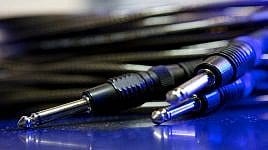



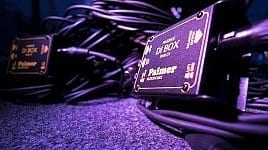
Martin Sundbøll says:
Unfortunately, the classic “hum” of 50Hz cannot be removed, as this has something to do with the ground connection. But that’s a whole nother story …
Next episode ?
Keith says:
The classic “hum” of 50Hz CAN be removed when using a Ground Loop Isolator.
Conan says:
So when I use two trs cables out of my R and L(mono) outputs on a synth I have. I can only hear one of the outputs and the other is basically in audible. If I only use one trs cable at a time, I can hear each of them individually without any loss of volume when I compare them. So what cables do I need to be able to get a consistent stereo output? The synths outputs are unbalanced.
Chas Underhay says:
Actually, proper electro mechanical keyboards, specifically Hammond organs, have used balanced connections between the consoles and the tome cabinets (active speakers in today’s language) since they came out in the 1930s. This was because Hammonds were originally intended to go in churches and the tone cabinets would often have been a long way from the organ console. Hammond tone cabinets have a balanced output as well as a balanced input so that multiple cabinets can be daisy chained. Leslie 122s (essential if you have a Hammond) were specifically designed for Hammond organs and have a balanced input to suit.
Ebube says:
I love this
Ebube says:
Please I need learn how to control noise
Nico says:
Hi Larry, I think you’re mixing up two concepts: signal balancing (what we want) and differential signalling (what you are describing in your article). As far as I understand, the important thing is simply to use three wires {+, -, 0} instead of two {+, 0}, and the ‘+’ and ‘-‘ wires have the same impedance. The sending device doesn’t necessarily have to feed the ‘-‘ wire with some inverted (phase-shifted) version of the ‘+’ signal. The simple fact that this additional ‘-‘ wire goes along the ‘+’ wire on the same way (because in the same cable) will make it grab the same noise/interference signals, which are then cancelled in the balanced input of the target device by substracting the signals on the ‘+’ and ‘-‘ wires. Do you see what I mean? Cheers